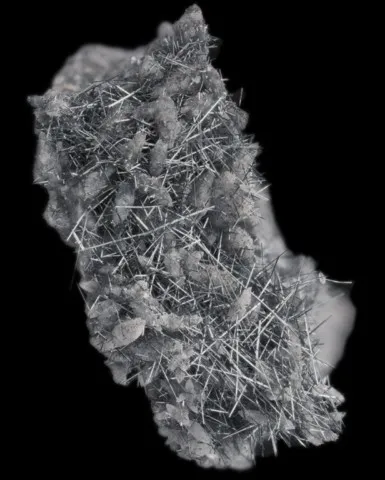JAMESONITE
Class : Sulphides and sulfosalts
Subclass : Sulfosalts
Crystal system : Monoclinic
Chemistry : Pb4FeSb6S14
Rarity : Uncommon
Jamesonite is an uncommon sulfosalt of mid-temperature lead-antimony hydrothermal veins. Its name was given to it in honor of the Scottish mineralogist Robert Jameson. It is found, like boulangerite, semseyite, zinkenite or plagionite, in veins with a dominant stibnite invaded by lead fluids, or in veins with galena and sphalerite infiltrated by antimony fluids. It appears in fibrous, acicular or filiform crystals, sometimes prismatic striated according to elongation, or in fibrous masses. Jamesonite readily weathers at outcrops to mixtures of antimony and lead oxides. The color is lead gray and the luster metallic. It is occasionally an ore of antimony, more rarely of lead.
Main photo : Jamesonite from Zacatecas, Mexico © Tony Peterson
Jamesonite in the World
Jamesonite in France
Twinning
Twins are known on {100}.
Fakes and treatments
No fake identified for this mineral species.
Hardness : 2.5
Density : 5.63
Fracture : Irregular
Streak : Gray-black
TP : Opaque
RI : Not measurable
Birefringence : Not measurable
Optical character : None
Pleochroism : None
Fluorescence : None
Solubility : Nitric acid
Magnetism : None
Radioactivity : None

